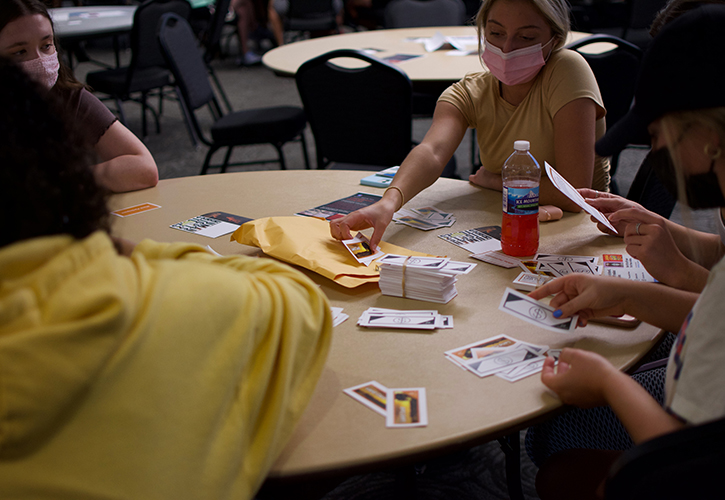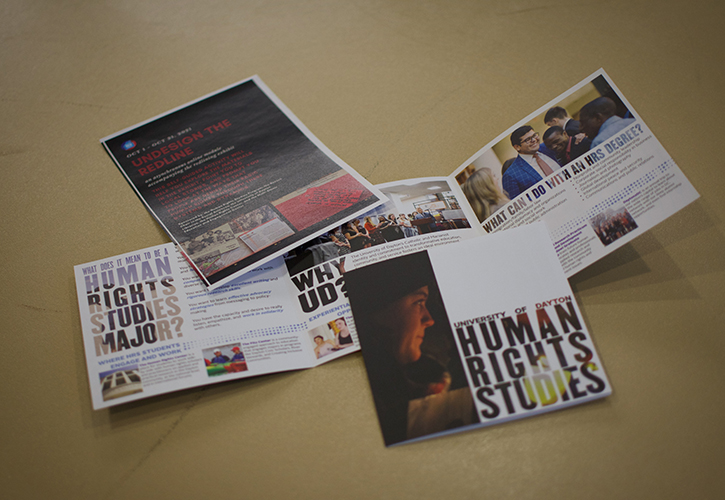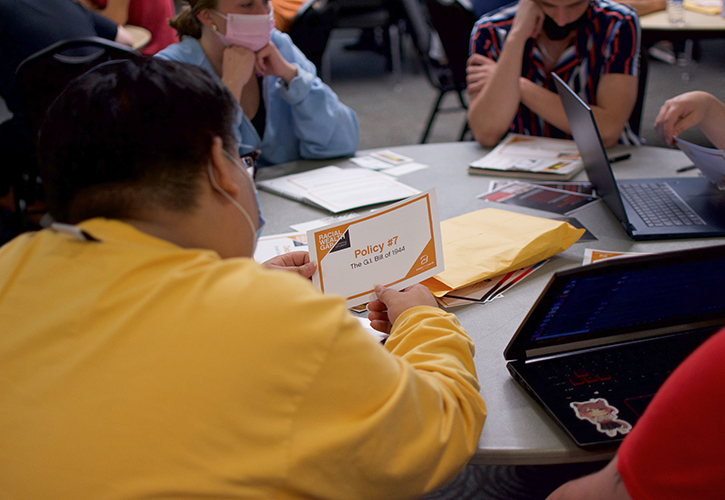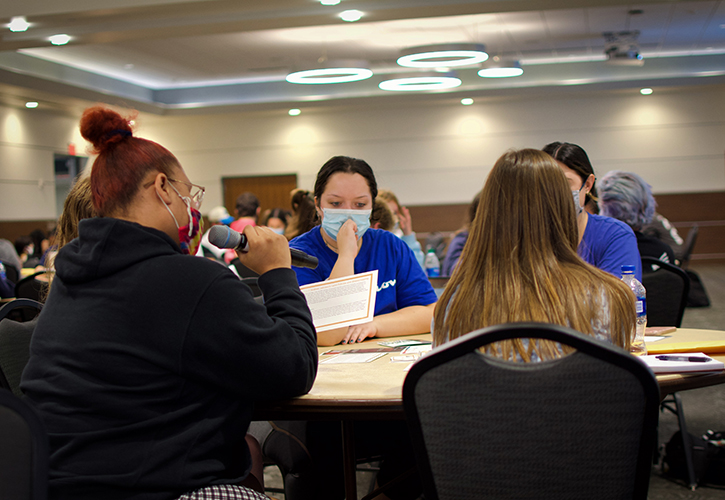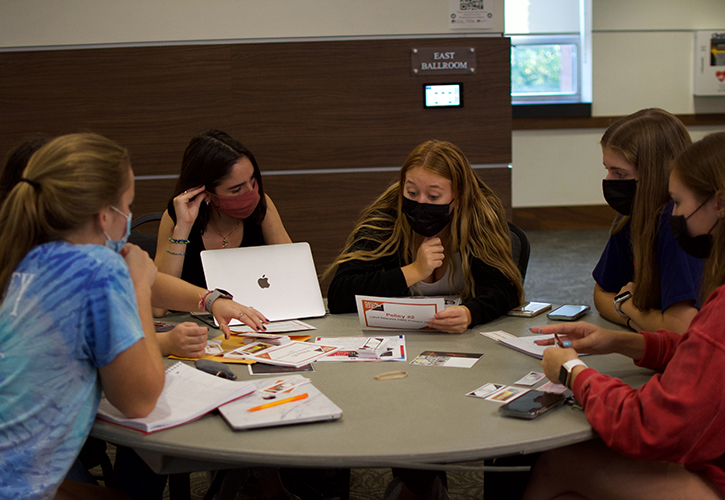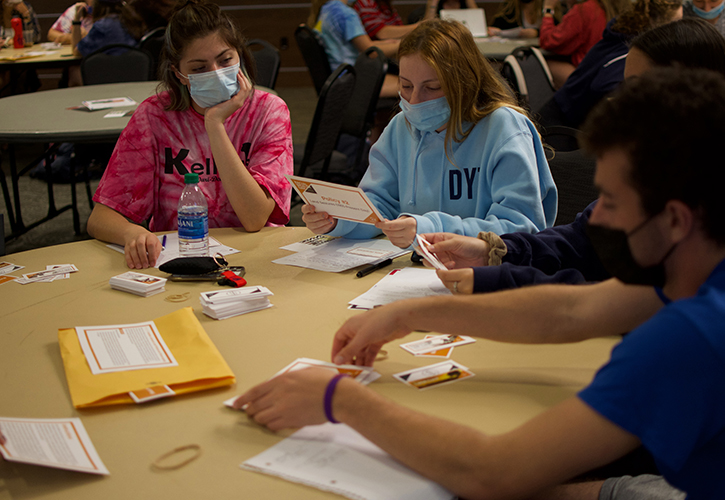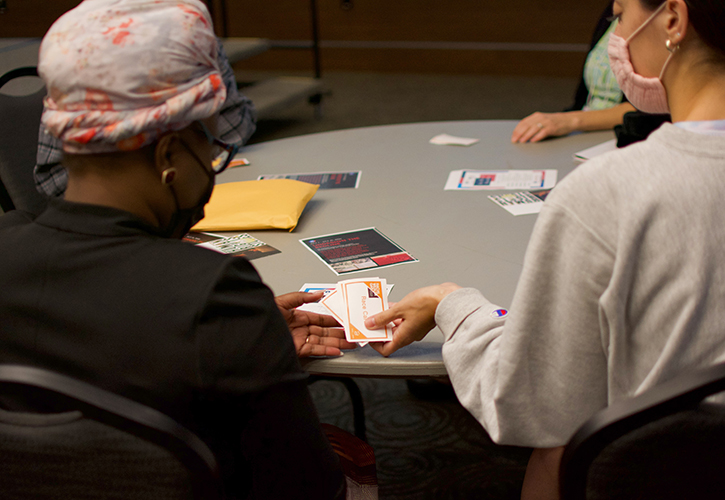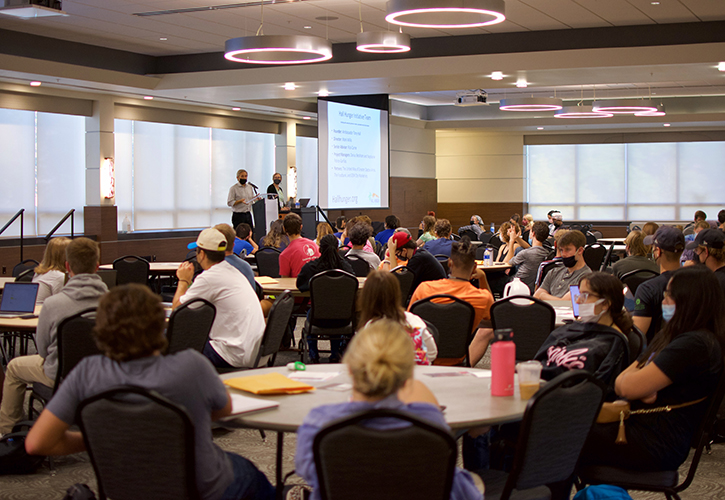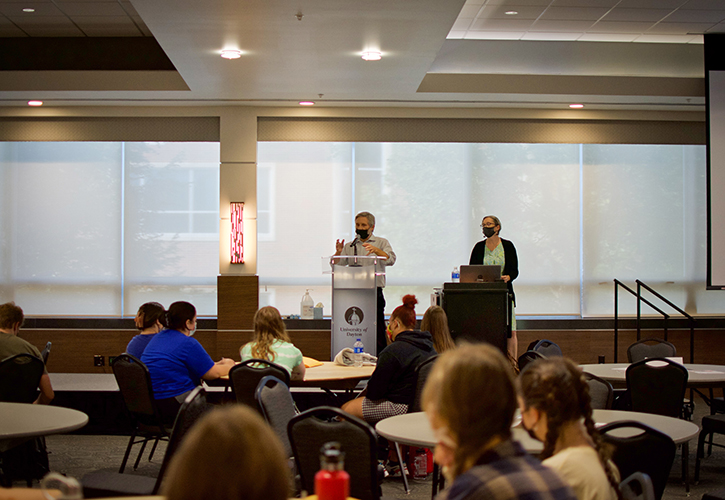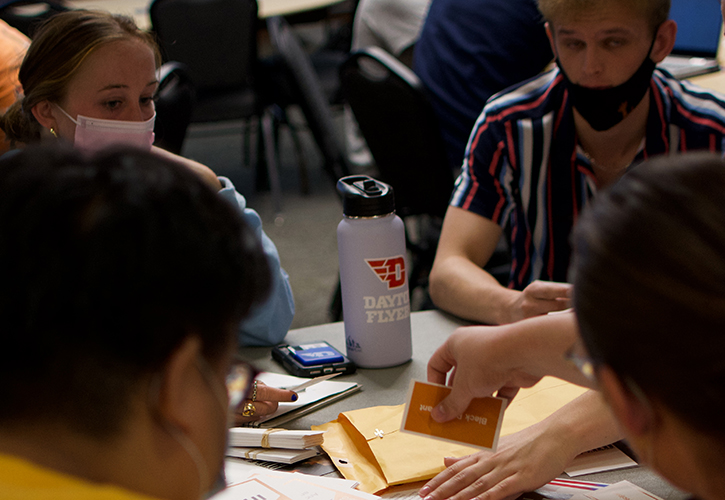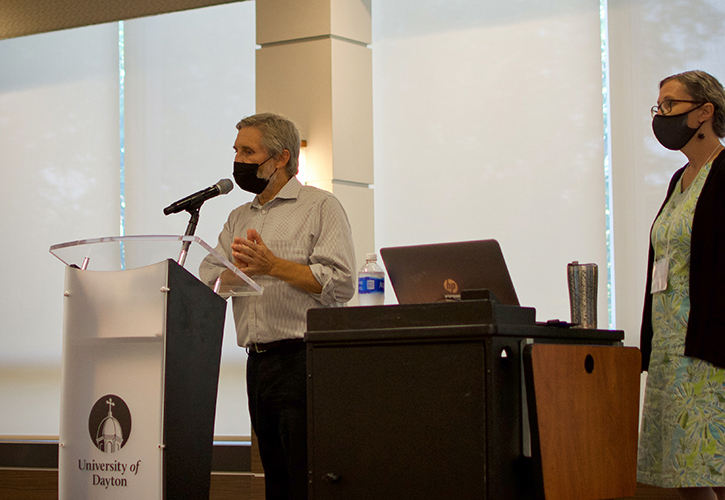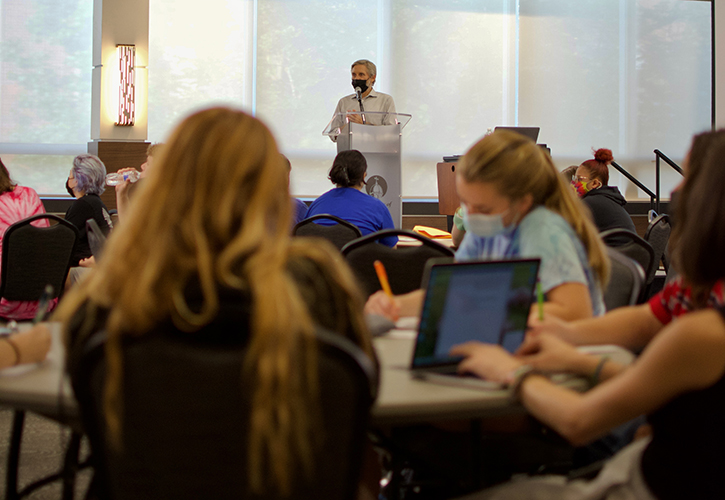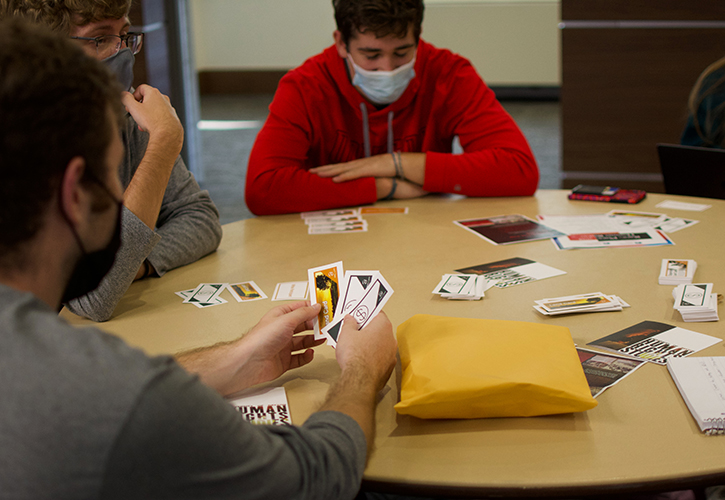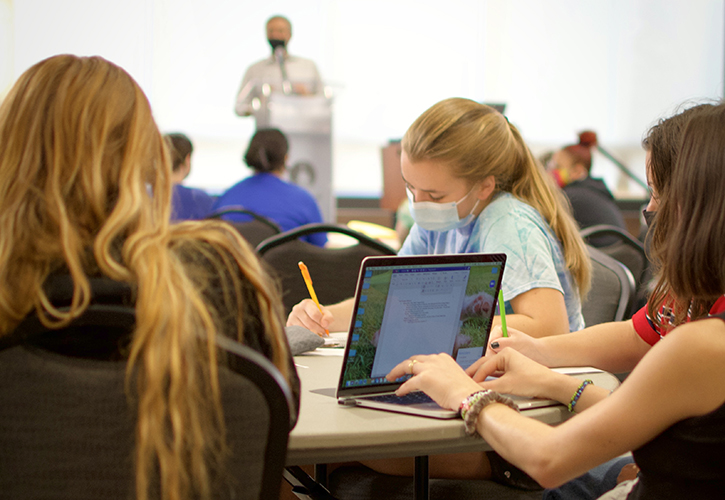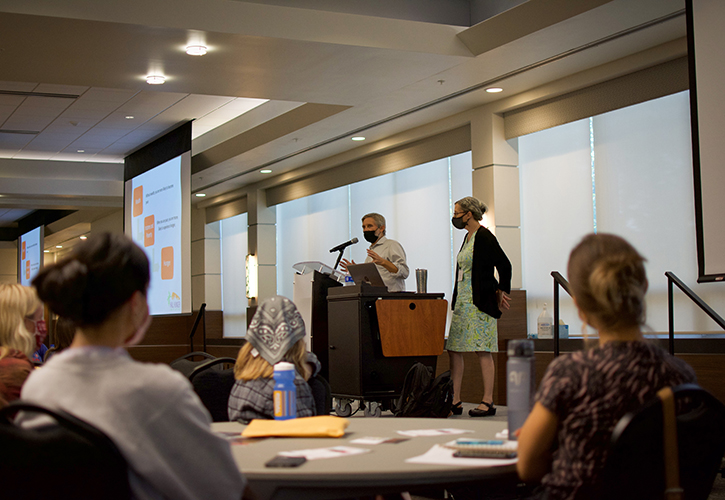College of Arts and Sciences Newsroom
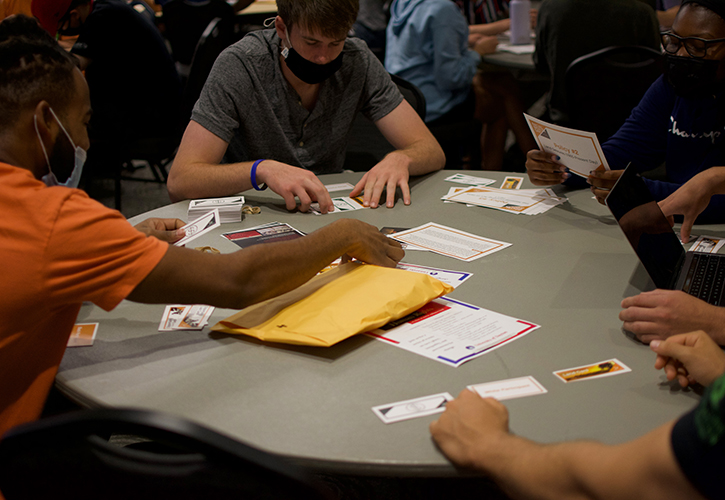
University of Dayton students learn about racial wealth inequality through Hall Hunger Initiative interactive simulation
By Carolyn Kroupa '22
One third of Dayton’s population lives below the poverty line, meaning they must choose between paying for food, rent or other expenses. This issue extends beyond the city to more than 41 million Americans who are food insecure and don’t know where their next meal is coming from.
The Hall Hunger Initiative, which moved to the University of Dayton Fitz Center for Leadership in Community in September, works toward creating a more equitable food system.
“We can’t understand hunger unless we understand poverty, and we can’t talk about poverty unless we talk about racism,” said Mark Willis, Hall Hunger Initiative director, during a racial wealth gap simulation event Sept. 28 in the Kennedy Union ballroom.
Aligned with the University’s mission to be an anti-racist institution, the simulation was an opportunity for students to learn how political systems uphold racism and to engage in thoughtful conversation outside of the classroom. During this interactive experiential learning event, students went step-by-step through the policies that created today’s wealth gap in the U.S.
More than 100 participants gathered in small groups to learn about the racism of redlining — a discriminatory system of denying services to residents of certain, often racially associated, areas. Using a “gamification” approach, students were given cards related to race, wealth and land to highlight policies that embedded structural racism into cities. Students received cards at different rates, which allowed them to see differences in wealth, prosperity, exclusion and privilege based on race.
The goal of the simulation was “to show students very explicitly how close at hand human rights issues are and that we have the power to change these exclusionary systems,” said Miranda Hallett, associate director of the Human Rights Studies program and associate professor of cultural anthropology, who helped coordinate the event.
“When we read issues or watch documentaries about systemic injustice, it can be easy to feel a distance between yourself and that experience,” Hallett said. “When you’re a participant in this simulation, you’re given a label, even if it’s only temporary, but that helps make the learning more real and close at hand.”
Anna Beebe, a senior human rights studies major from Cincinnati who serves as the Human Rights Studies program student intern and Human Rights Center marketing and communications intern helped prepare for this event.
“This simulation was a strong example of how all human rights are interconnected and showed why analyzing history is so valuable to creating equitable opportunities in our Dayton community and beyond,” Beebe said.
Her chief takeaway from the simulation was that while most people think the system is broken, in reality, it’s working exactly how it was intended.
“For example, the food and housing systems that exist now were created to oppress Black and brown communities,” Beebe said. “Throughout history, laws were passed to limit Black folks’ access to resources so white communities could rise above the marginalized.”
Hallett said the simulation highlighted privilege and access to land and wealth and demonstrated opportunity hoarding. “Opportunity hoarding allowed white privilege to become embedded in society,” she said.
Willis told students that what happened in the 1930s and 1940s still shapes our community today. He said it’s harder to succeed in school when proper nutrition is not within reach. Food deserts have dangerous health outcomes and this can be seen in the racial disparity in life expectancy. The average life expectancy for Black people is five years less than white people, he said.
The racial wealth gap simulation is the first event in a year-long series organized by the Human Rights Center titled, “Race, Place, and Human Rights.” The series includes campus and Dayton community events advocating for human rights and racial justice that incorporate experiential learning activities about diversity and social justice issues.
“The simulation humanized the experience of being excluded and asked participants to consider the whole system of policies,” Hallett said. “It can be difficult to bring up these topics. They don’t naturally emerge in conversations, but this simulation provided space for open-ended peer-to-peer reflective conversation.”
Willis concluded the event by encouraging participants to continue the conversation, educate themselves and others, and speak out against racism and discrimination.
“Use your voice and speak up because no form of racism should be tolerated,” he said
For more information, visit the Human Rights Center website.

